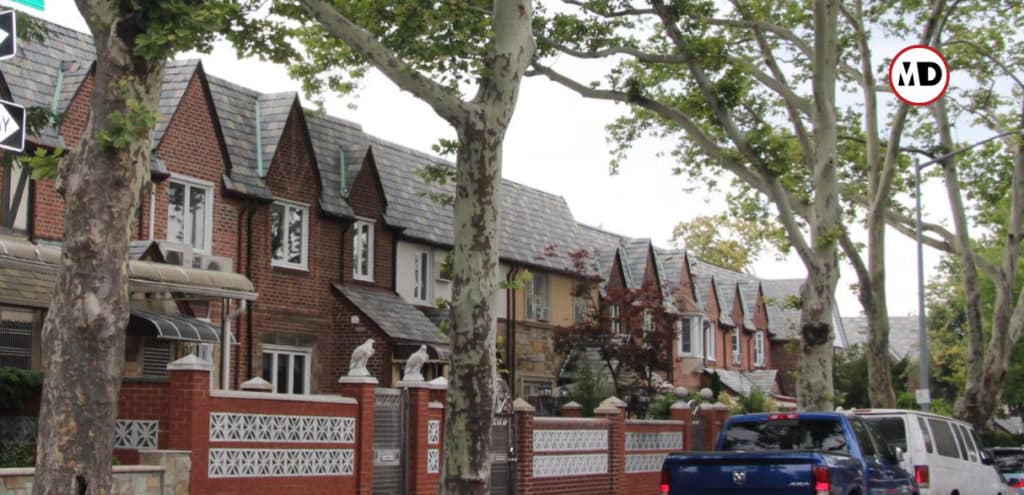
At MortgageDepot, we’re committed to helping families turn the American dream of owning a home into a reality. Our years of experience in the mortgage industry have taught us that the best way to ensure success is to look at purchasing a home as a process that begins long before a buyer begins looking at homes. We’ve created a guide to the home buying process with a few easy to follow steps leading up to the day our buyers realize their dream.
It all begins with the down payment
As a general rule, most mortgage lenders require that borrowers have at least 20% of their own money to put toward the purchase price of a home. It could take years to save enough money for a down payment, so people planning to purchase a home should open a savings account dedicated to building up the funds needed for a down payment.
Anyone considering the purchase of a home should speak with one of our experienced loan officers about down payment options. For example, some of our lenders allow buyers to accept gifts from family members as the down payment while others offer mortgage programs with down payments of less than 20%.
Giving buyers an edge: Preapproval and prequalification
Sellers in a competitive real estate market want to know the person making an offer to purchase their home will be able to obtain financing. Buyers who are preapproved or prequalified by a lender before they begin shopping for a home are more attractive to sellers. It also gives buyers an idea of how much they can afford to pay for a home.
When we prequalify our borrowers, we give them a letter with an estimated mortgage amount that a lender might approve them for based upon their current income and debts. The preapproval process goes considerably further into a borrower’s finances and includes a check of the buyer’s credit. Buyers get a document proving to sellers that a lender has already preapproved them for a loan up to a specified amount to give the purchase offer more validity than one from a buyer who has not gone through the approval process.
Choosing the suburbs or a life in the city
Once a buyer has been preapproved or prequalified by a lender, it’s time to begin the search for a home. Where buyers choose to live can be based upon a number of factors, including:
- A desire to live within close proximity to family members.
- Wanting to limit the driving distance to work.
- The availability of public transportation, such as buses and trains.
- Families with children might wish to be within a specific school district.
Some municipal employees must live within the city, town or county in which they work in order to keep their jobs.
Living within a city certainly has its advantages with shopping, schools, parks and things a person might want or need usually located within walking distance or a short commute by mass transit. Families with young children might prefer suburban living with large back yards and more spacious homes.
Buyers who are undecided about where they wish to live should look around to explore their options. Urban and suburban locations are not the only options available to buyers. Some people might opt for the quiet lifestyle offered by a small town in a rural location, but the decision about location should not be made before making several visits to determine if the one a buyer thinks might work is in fact the right one.
Choosing what to buy
The types of homes available to a buyer may differ from one location to another. Someone shopping for a home in an urban area might find condominiums and cooperative apartments to be the primary types of homes available for purchase with only a limited number of detached single-family homes available for sale. The opposite is true in suburban areas where single-family homes might dominate the market with some condominiums and a smattering of cooperative apartments available.
Buyers might also have to decide between new construction and resales. Some popular locations with tracts of undeveloped land could undergo a building boom with newly built homes dominating the marketplace while other locations might be dominated by existing homes being offered for sale by their owners.
New construction lets buyers make design decisions and customize a home to suit their taste and lifestyle. However, having a house built takes time and might not be a good fit for a buyer who is in a hurry to move. Another drawback is that builders tend to set their prices and stick to them with little or no price negotiation available for a buyer.
Resales offer the benefit of allowing buyers to close tittle and take ownership sooner than with new construction. Buyers might also get a better deal on a larger home with a resale because of the ability to negotiate the price with the seller.
Working with a real estate agent
Working with a licensed real estate agent offers buyers an expert’s knowledge and insight into the local real estate market. Local agents frequently know about homes that sellers might be putting on the market in the weeks or months to come.
A real estate agent is a valuable asset to have when the time comes for a buyer to make an offer on a home. The agent’s knowledge of the real estate market and home values helps buyers determine how much to offer in order to not overpay for a home.
The agents not only arrange for buyers to see available properties, but they also present and negotiate offers. Once an offer is accepted, the agent prepares the sales agreement or contract for signing by the buyer and the seller.
Obtaining a mortgage to complete the purchase
Once a contract has been signed on an accepted offer, the buyer must complete the process of obtaining the mortgage loan. At MortgageDepot, our loan officers work with buyers to complete the financing process from providing assistance with the mortgage application through to the closing.
Have questions or need help?
Call us now at 800-220-LOAN
Request a call back or email us your questions!







